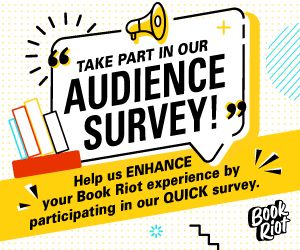DC’s Rebirth: What Does It Mean?
You may have heard a thing or two about DC Comics’ Rebirth. Comics Twitter was abuzz about it on Thursday night/Friday morning. But if you’re a new reader to comics, or someone who doesn’t follow industry trends, you may be wondering, “What does this mean for me?” I’m going to try and break this announcement down and let you know why we’re frustrated.
If you follow me on Twitter, you saw some pretty angry tweets from me about this announcement. Why? Because it reoriented the DC Comics line towards “core” comics fans.
Comics needs new readers in order to survive. Centering on a “core” base, rather than being new-reader friendly is…not good.
— Swapna Krishna (@skrishna) February 19, 2016
It’s so dejecting. We try so hard at Panels to tear down gatekeep-y comics walls, and it’s really been working.
— Swapna Krishna (@skrishna) February 19, 2016
So for a comics publisher to make it clear they don’t really care about new readers…well. Okay then.
— Swapna Krishna (@skrishna) February 19, 2016
But what does that mean?
In mid-2015, DC launched DC You, a new initiative aimed at inclusivity and representation. More women superheroes. A gay superhero with his own title. More emphasis on diversity in and behind the pages. It was incredibly encouraging to see as a comics fan. Just a couple of months into the initiative (and not taking into account trade sales—the first trades are just releasing now, and most newer readers to comics, which includes the audiences these titles were aimed at, read in trades), rumors abounded that was pulling back from DC You.
And now we have the results of that. Rebirth: a new slate of #1 titles, a decrease in the total number of titles, and a new, lower price point of $2.99 per issue.
On first glance, that might appear encouraging: new #1s means new entry points for new readers, and a lower price point means it’s more affordable, right?
Well, it’s more complicated than that.
First, let’s talk about that price point. $2.99 is a great price for a single issue—I’m on board for this. But the problem with it is that DC also announced that over half their books will be double shipping—this means that instead of one issue a month, you’ll have to buy two to keep up with stories. In the end, it’s more money out of readers’ pockets, and double shipped comics often suffer in terms of quality because of the grueling schedules.
Second, I’m always happy about new entry points into a shared universe. But let’s talk about the market DC is orienting to. “If you have, like me, long boxes of DC Comics, you will be very happy. If you’ve never read a DC comic before, you won’t be too lost. This is definitely for comic book readers more than it is for casual readers…but that doesn’t mean it’s exclusive of them,” says Geoff Johns, the architect of DC’s Rebirth in an interview with CBR.
In the official announcement, Dan DiDio, co-publisher of DC Entertainment, says, “We also believe in the direct market and the core comics fan. REBIRTH is designed to bring back the best of DC’s past, embrace the stories we currently love and move the entire epic universe into the future. We are returning to the essence of the DCU. With REBIRTH we are putting the highest priority on the direct market and we will continue to create and cultivate new opportunities for retailers to thrive and prosper, grow readers, fans and customers.”
What does this mean? “Core comics fan” is coded language for “straight, white, middle-aged man.” “Casual readers” are women, PoCs, LGBTQIA+, and other groups of traditionally marginalized readers. Now, it’s important to note that plenty of these people lumped into the “casual reader” groups have been reading comics for their entire lives; they are just not in the group DC considers core readers.
“Direct market” means comic book shops selling in print issues. It excludes anyone who buys in trades or digitally, which is where you’re going to find new readers. And comics needs new readers in order to survive as an industry.
I am a woman of color. I’m a hardcore comics fan. I buy in print issues from my local comic book shop. Running a comics community is my full-time job. And yet, I am not included in DC’s group of “core comics fans,” the group they are marketing to. It’s gatekeeping at an institutional level.
It’s worth noting that the creative teams on these books haven’t been announced, and won’t be until WonderCon in late March. The creative team will have a lot of say in what direction the books take and who they are written for. For example, DC has already announced an exclusive deal with Tom King, who cowrites the Panels favorite Grayson. We’re encouraged by this news. It’s not all doom and gloom, and it’s worth waiting to see who the creative teams are. What’s more, we don’t know the status of existing series. While presumably, if they aren’t on the list, they’re cancelled, we don’t know that for sure. For example, it’s been confirmed that Prez is returning in October.
It’s also worth noting that DC made these announcements at ComicsPro, a gathering of comic book retailers and local comic shops—of course DC is going to court them at their own convention. It only makes sense. It’s possible the messaging could change, but we’re not holding our breath.
It’s clear who DC Comics is targeting. It’s not us. It’s not our audience. We at Panels will continue to try and make things clearer and tear down the gates of comics for new readers, but it’s dejecting when publishers make clear that they aren’t interested in this. That their comics aren’t for us.















